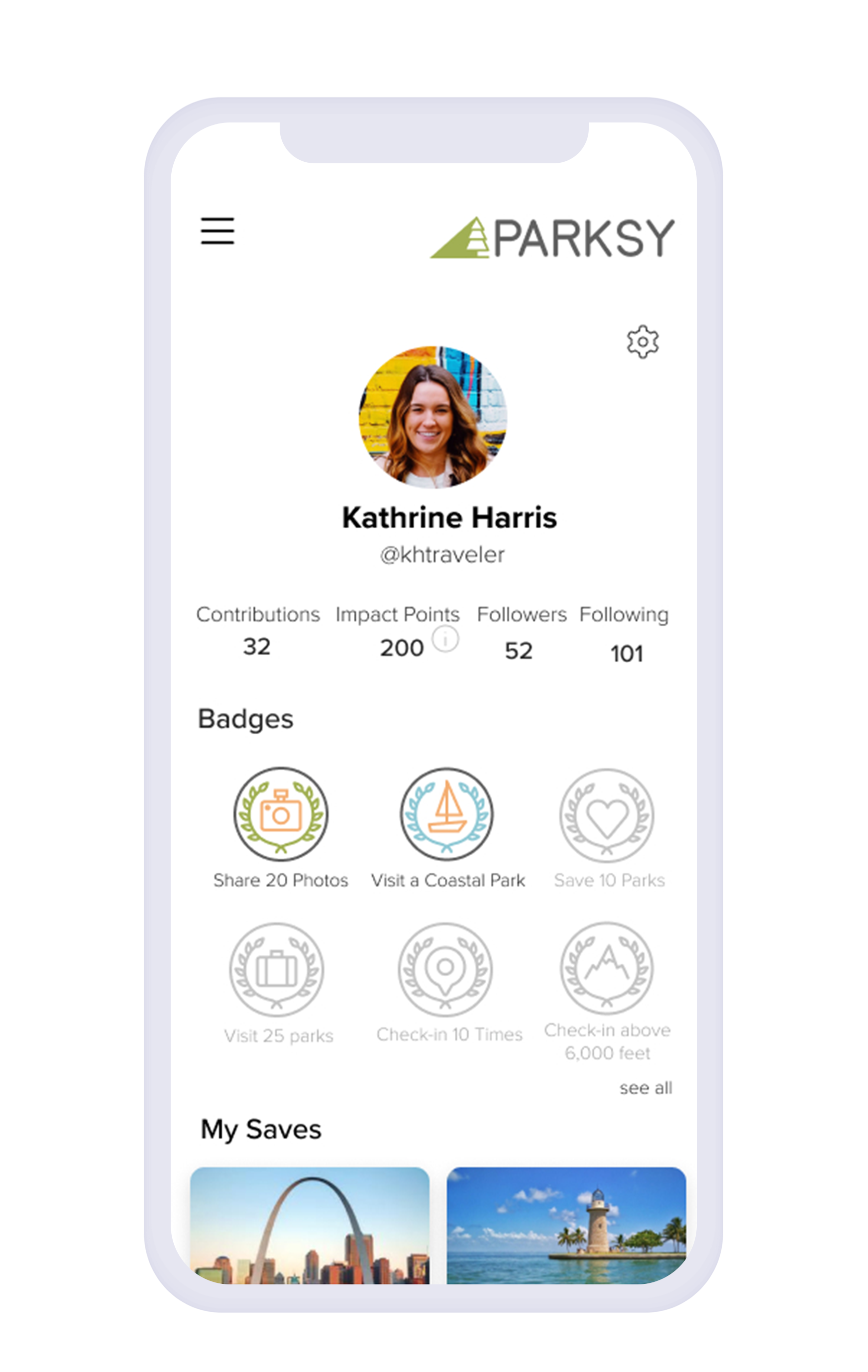This student project was to design a recommendations app. The Parksy app was developed as a companion to the “Find Your Park” campaign that was created through a collaboration between the National Park Foundation and National Park Service to bring awareness to the public of the variety and richness of America’s national parks. Parksy is meant to be a non-traditional take on the National Parks and help to entice those who may not be naturally inclined to visit.
The national parks have a diversity problem. While the parks themselves don’t track demographic data, independent studies have found that of the 300+ million visitors each year only about 20% are from minority groups. As the demographics of America continue to shift, this could become a major issue for the parks. Indeed, just 55% of millennials (those born roughly between 1981 and 1995) are identified as non-Hispanic white.
To continue to protect the lands, the national parks need to create a sense of commitment and appeal to non-white populations and younger people that represent the shifting diversity of America. There also seems to be a disconnect between the national parks and their local populations. For example, only 2% of visitors to Saguaro National Park in Tucson, Arizona identify as Hispanic despite the local population being 44% Hispanic.
The lack of minority visitation to the parks has many contributing factors, but often noted are: high travel costs, safety concerns, lack of awareness about the parks, and lack of knowledge of the activities available within the parks. The app aims to help match users with their ideal parks experience and address some of the issues related to attendance. The organizations behind the Parksy app believe there is a national park for everyone from every walk of life.
UI/UX Design
Figma, Illustrator
Research, Sitemap, Wireframes, Prototypes, UI Design
view the prototypeBased on this research, The Parksy app is focused on targeting primarily college-educated millennials, ages 28-40, who identify as being of a racial/ethnic minority group and have some disposable income to travel. White visitors are also considered, as the parks need commitment from this generation as a whole, however Parksy will primarily focus on creating awareness among other racial groups and helping to address some of the visitation concerns noted above. The typical user is active on social media and tech-savvy. They are interested in experiences that are unique and worth sharing with their friends.
Gender:
60% female
Age:
28-40 years old
Annual Income:
$50K- $75K
Level of Education:
Bachelor's degree +
Marital Status:
Single
Benefits Desired:
informative, unique
Based on this research, I crafted two personas to represent Parksy's typical users.

38 year old Health Services Director from Atlanta, GA
Behaviors
Loves exercising at the gym and social activities, enjoys learning new things and taking classes (cooking, pottery, etc)
Goals
Live a healthy lifestyle and find new activities in her community
Frustrations
Doesn't feel like the National Parks are accessible where she lives, while she enjoys exercising she doesn't see herself as outdoorsy

30 year old Social Media Manager from Scottsdale, AZ
Behaviors
Loves work challenges and helping new clients, enjoys yoga and her dog Dexter, she also enjoys participating in community activities (like park cleanups and community gardening) and is passionate about the environment
Goals
Find environmentally friendly activities, enjoy time with dog
Frustrations
She likes travel but doesn't want to increase her carbon footprint, National Parks seem overwhelming and unsafe for her to visit alone
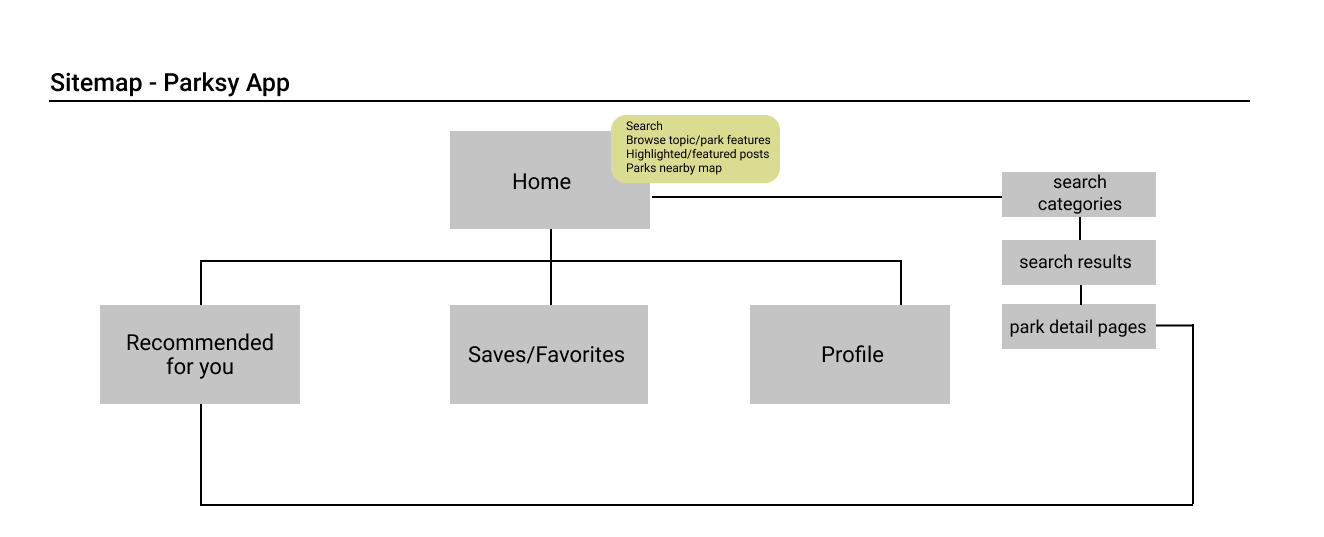
Based on the research, a complete sitemap was created that would offer users the ability to browse unique park experiences and get recommendations based on their interests.
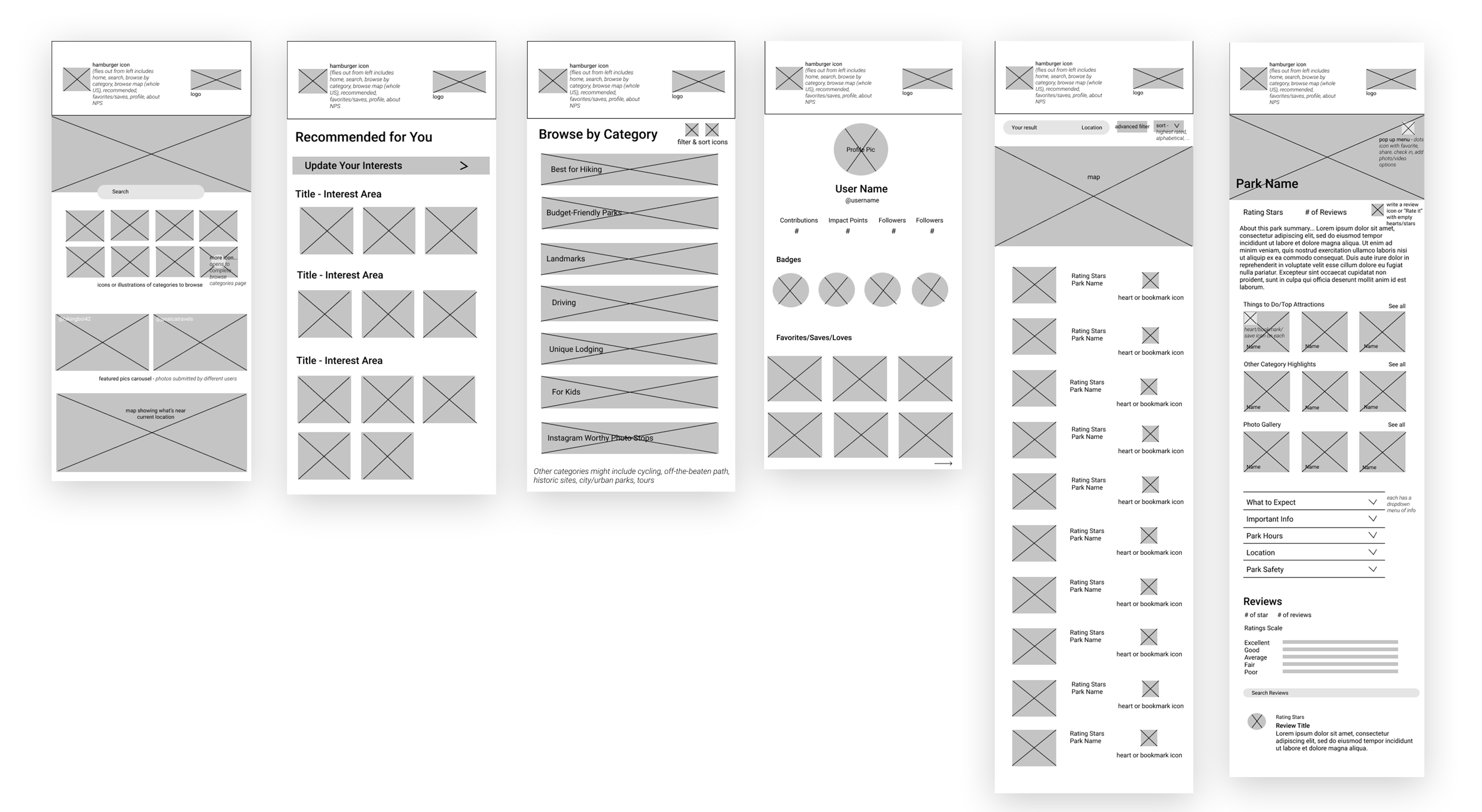
Wireframes were created for a homepage which will display categories to browse, featured photos from users, and a map showing the nearest National Parks location. Additional screens include personalized recommendations, a user profile with gamification, and robust search and park details features.
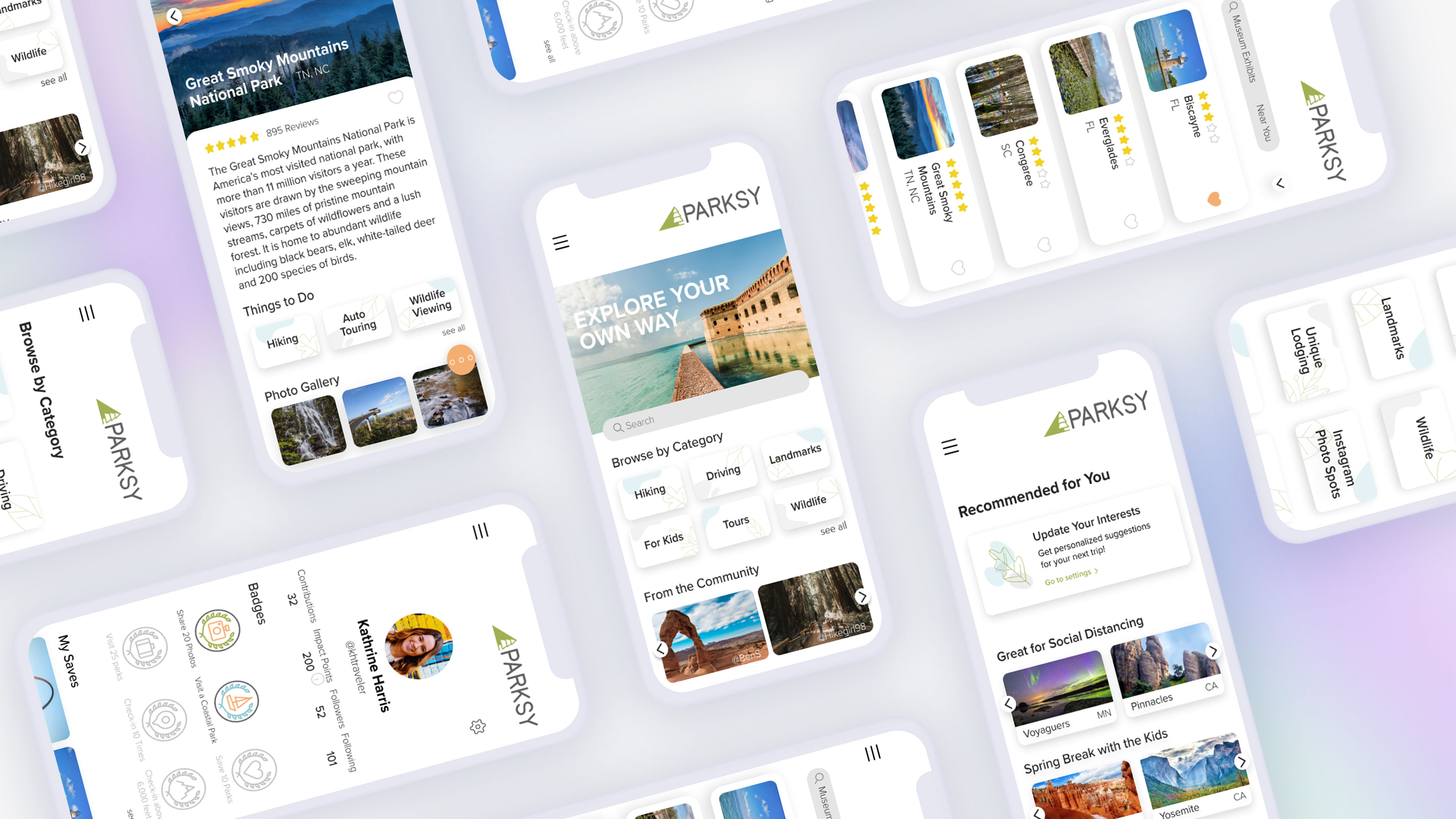
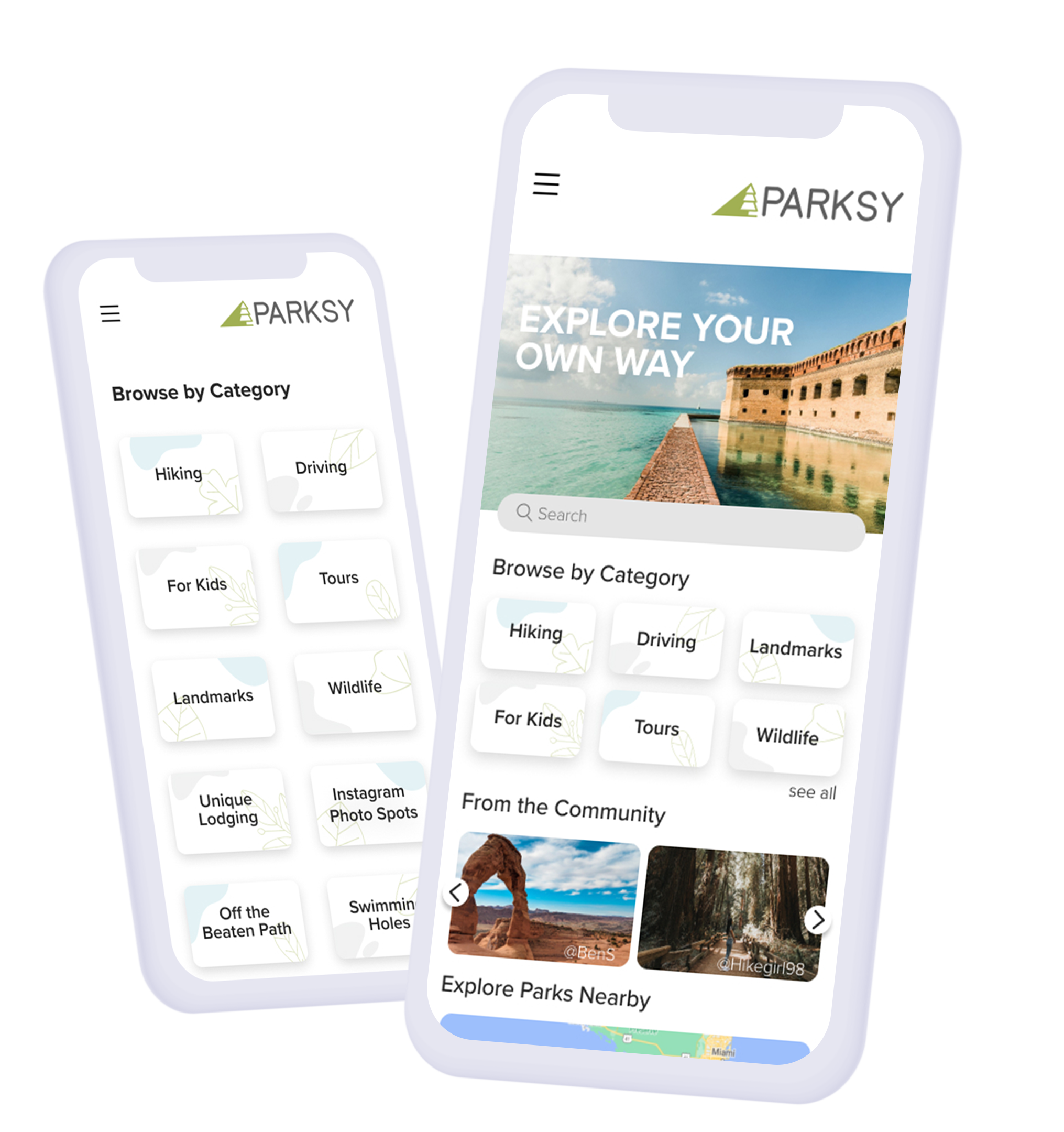
The goal of the Parksy app was to create a resource that would appeal to a population of users who may not be naturally inclined to visit the national parks, either due to lack of interest or lack of knowledge. For this reason, the final design seeks to showcase the National Parks in a bit of a non-traditional way. Research shows that younger people perceive the national parks to be “out west” when in reality there are national parks in every state that offer a variety of activities outside of traditional hiking and camping thus a map of nearby parks was included on the home screen.
The logo typeface is called “National Park” and was developed based on the typography on signs within the National Parks. A subtle pattern was used for elements throughout the app to offer a light and modern feel.
Card style elements were used on the “Recommendations” and “Search Results” pages to add depth and interest to the design while showcasing photos of the parks. Users can get customized recommendations by updating their interests in their profile
The sample search results show “Museum Exhibits” since this is something that most people do not associate with the National Parks and the results are sorted nearest to our user. Users also have the ability to "heart" parks of interest and save them to their profile. The arrow at the top allows the user to sort the results by highest rated or alphabetical order as well. There is an option at the bottom of the page to see the results on a map.
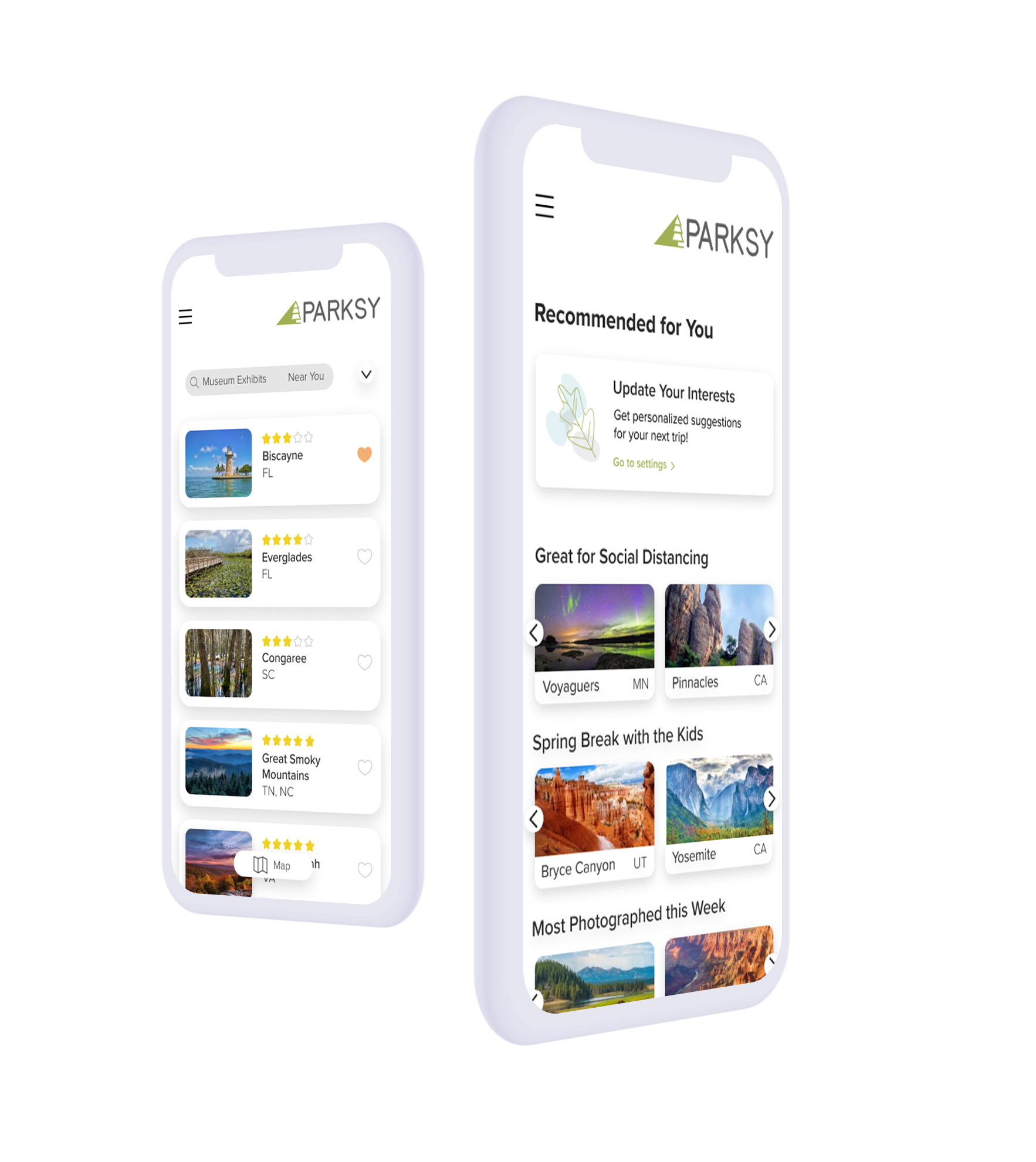
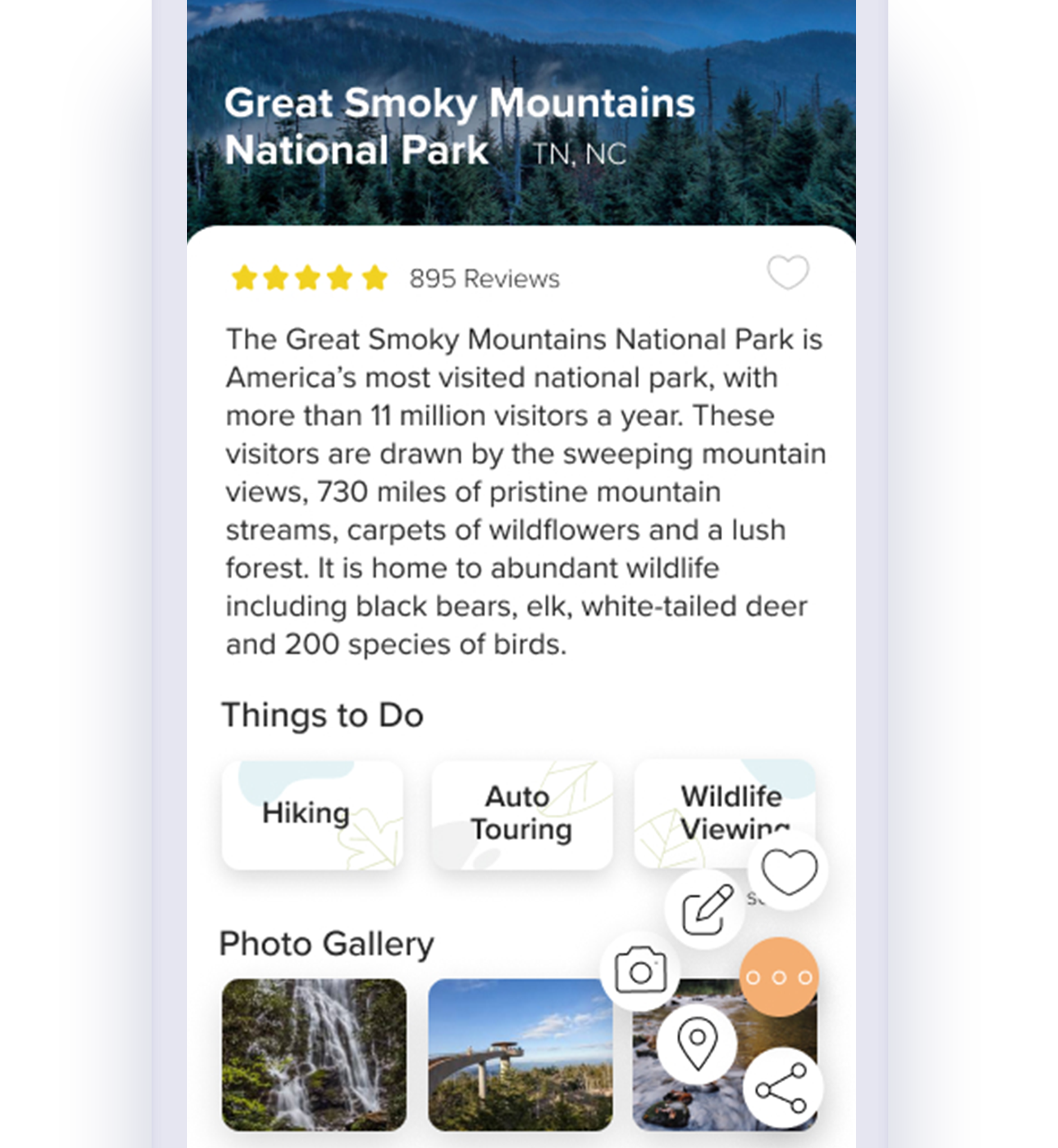
The park detail screen provides the user with an overview of the park and reviews from other users. A floating icon at the bottom of the page moves when the user scrolls and pops open to allow the user to save, share, write a review, add a photo, or check-in at their location.
Pertinent information for visiting each park is included in the form of drop-down menus with a specific section devoted to “safety” since safety concerns were one of the primary reasons minority millennials noted for not visiting the parks.
The user profile screen incorporates gamification in the form of badges the user can earn for completing different actions within the app. Users can also earn “impact points” for completing actions. These points can then be turned into donations to the National Parks System. Research shows millennials tend to be very socially motivated and care about environmental causes. The use of “impact points” helps to appeal to their philanthropic nature and also further educate users on the conservation efforts put forth by the National Park System.
